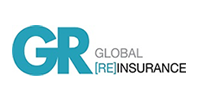Sponsored content: Travelers Europe senior risk management consultants Philippa Wilkin and Paul Smith discuss how to minimise negligence risks for legal clients
A Travelers review of negligence-related insurance claims for law firm clients over the past six years revealed that more than half originated from two areas – residential conveyancing and wills, trusts and probate.

Residential property work remains a leading cause of negligence claims. While the number of claims has declined in recent years, their severity has increased.
The current share of residential conveyancing claims is lower than it has been for some years. One probable reason is that we haven’t seen a shock to the system like a property market crash since around 2008.
That said, conveyancing still generates a significant number of claims – and their cost is increasing.
For example, claims brought by aggrieved purchasers, unhappy about paying more tax due to missing stamp duty land tax, are more frequent and cause an uptick in claims activity.
Increased risk
Conversely, negligence claims involving wills, trusts and probate have been climbing markedly. They now generate over one third of notifications, which is also unusual.
We may be seeing the results of an aging population and rising numbers of people diagnosed with dementia, for example. This generates concerns around mental capacity and suspicions of undue influence when making wills.
Also, the unprecedented rise of remote engagements during the Covid-19 years created significant barriers for getting wills and documents signed and witnessed in person.
If you’re an aggrieved beneficiary, or believe you should be a beneficiary but are not, it can be tempting to lawyer up.
Common errors
In both work areas, retainer management is a major source of errors, generating the highest volume of claims – more than those relating to advice, drafting or dishonesty.
Issues may arise when clients feel their lawyer hasn’t followed clear instructions, has provided inadequate professional service or has missed time limits, for example.

Distraction drives these claims. Often stress, fatigue and burnout are behind it.
From studies of law firm culture, we suspect this trend correlates with the increasing use of technology in our personal and work lives.
Multiple technologies can make it more likely for people to miss something or make mistakes that might be catastrophic at some point in the future.
Mental health risks
The risks of distraction stand to increase as law firms adopt more technology – and feel pressure to work faster and more efficiently.
There is also risk in defaulting to technology as a means of managing mental health in this environment.
Dealing with stress and mental health isn’t just giving people another app for meditation. Many people in this profession are under significant stress from the moment they come out of the blocks.
On occasion, it gets to the point of burnout to recognise there’s a problem. We are actively researching this to reduce risks and enhance workplace culture.
- To learn more about how Travelers can help your legal clients manage and mitigate the risks that lead to insurance claims, click here













































